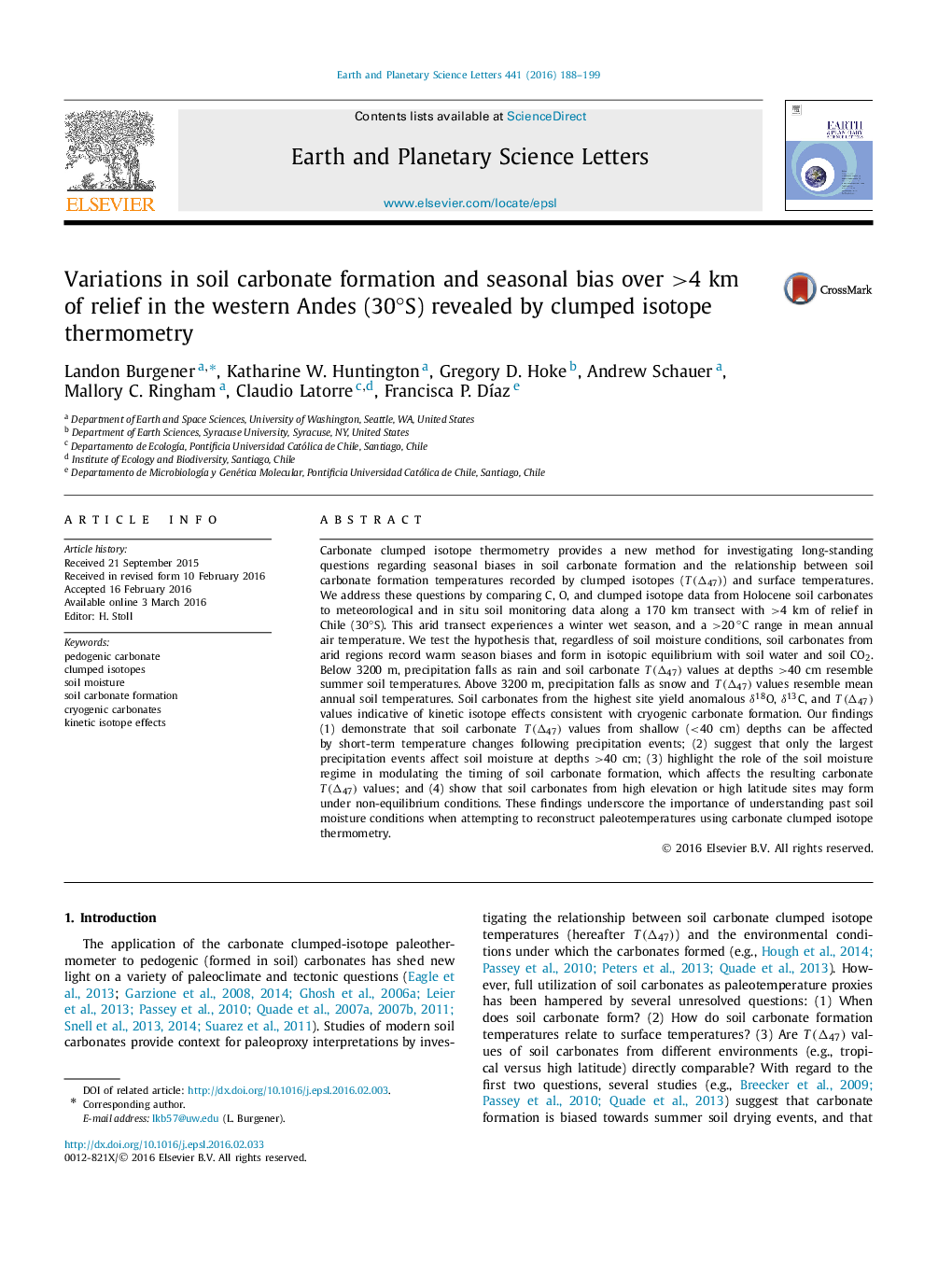| Article ID | Journal | Published Year | Pages | File Type |
|---|---|---|---|---|
| 6427529 | Earth and Planetary Science Letters | 2016 | 12 Pages |
â¢We present new T(Î47), δ18O, and δ13C data from Holocene/modern soil carbonates.â¢Samples were collected from the west flank of the Andes in Chile (30°S).â¢In rain-dominated areas, T(Î47) values resemble summer soil temperatures.â¢In snow-dominated areas, T(Î47) values resemble mean annual soil temperatures.â¢Carbonate at the highest site exhibits kinetic fraction due to cryogenic formation.
Carbonate clumped isotope thermometry provides a new method for investigating long-standing questions regarding seasonal biases in soil carbonate formation and the relationship between soil carbonate formation temperatures recorded by clumped isotopes (T(Î47)) and surface temperatures. We address these questions by comparing C, O, and clumped isotope data from Holocene soil carbonates to meteorological and in situ soil monitoring data along a 170 km transect with >4 km of relief in Chile (30°S). This arid transect experiences a winter wet season, and a >20â°C range in mean annual air temperature. We test the hypothesis that, regardless of soil moisture conditions, soil carbonates from arid regions record warm season biases and form in isotopic equilibrium with soil water and soil CO2. Below 3200 m, precipitation falls as rain and soil carbonate T(Î47) values at depths >40 cm resemble summer soil temperatures. Above 3200 m, precipitation falls as snow and T(Î47) values resemble mean annual soil temperatures. Soil carbonates from the highest site yield anomalous δ18O, δ13C, and T(Î47) values indicative of kinetic isotope effects consistent with cryogenic carbonate formation. Our findings (1) demonstrate that soil carbonate T(Î47) values from shallow (<40 cm) depths can be affected by short-term temperature changes following precipitation events; (2) suggest that only the largest precipitation events affect soil moisture at depths >40 cm; (3) highlight the role of the soil moisture regime in modulating the timing of soil carbonate formation, which affects the resulting carbonate T(Î47) values; and (4) show that soil carbonates from high elevation or high latitude sites may form under non-equilibrium conditions. These findings underscore the importance of understanding past soil moisture conditions when attempting to reconstruct paleotemperatures using carbonate clumped isotope thermometry.
